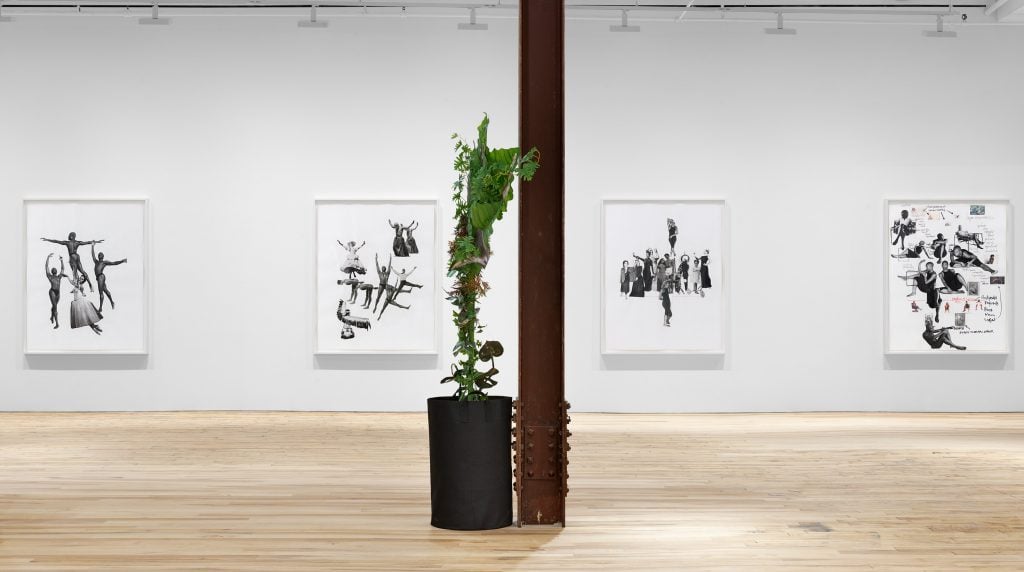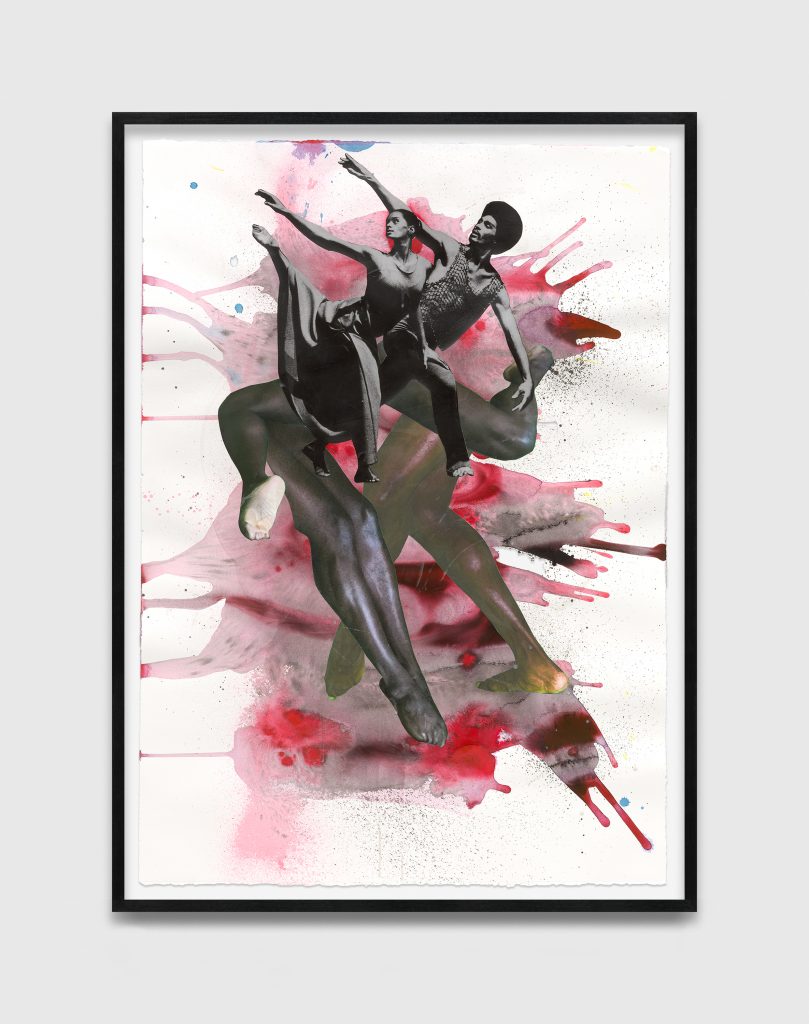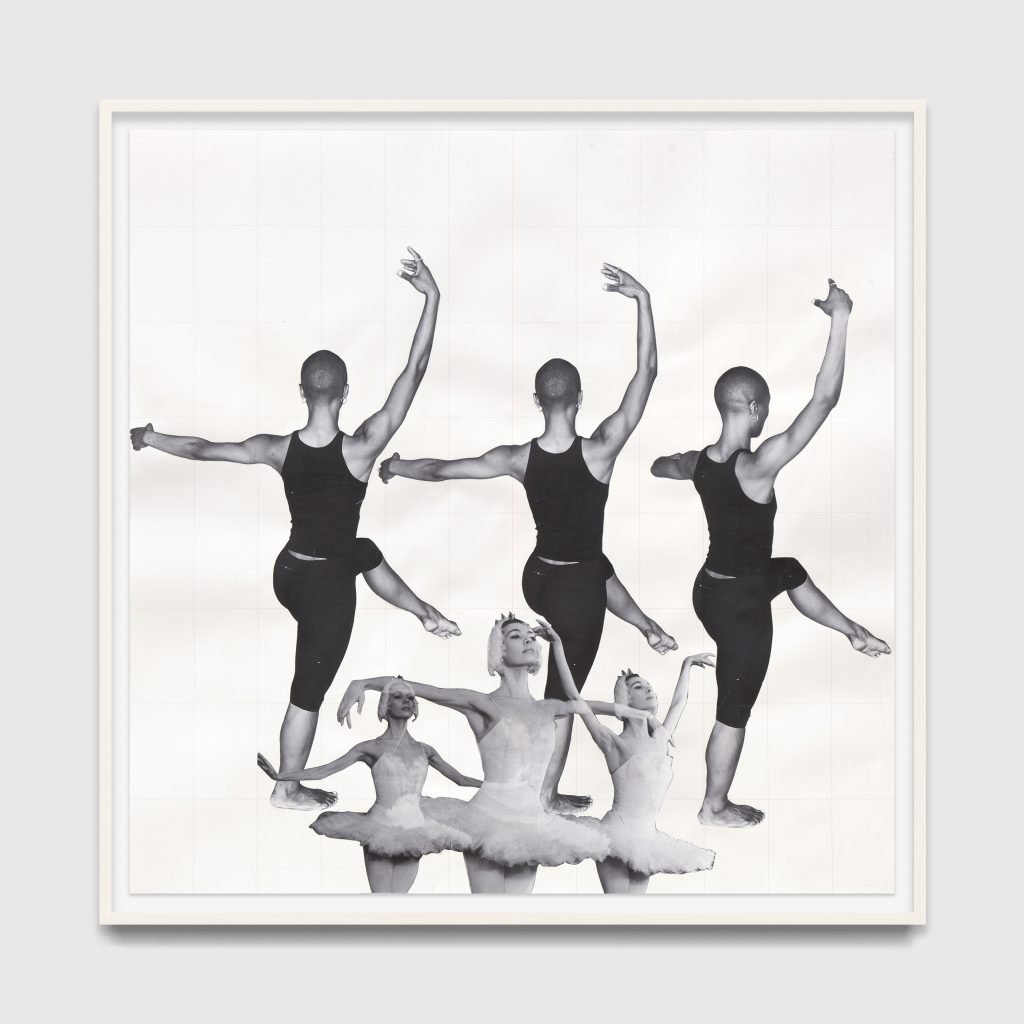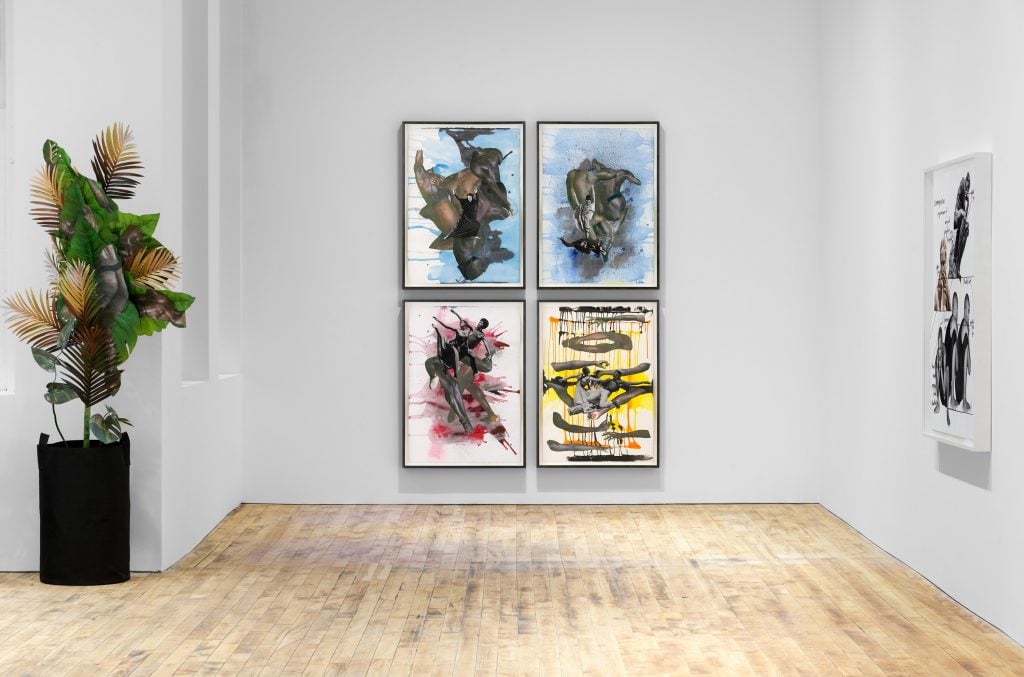Art Criticism
David Zwirner’s New Outpost 52 Walker Offers Us a New Way to Experience an Art Gallery, But Only If You’re Willing to Put in the Time
The inaugural show, "A Line" by Kandis Williams, is elegant and conceptually rich.

The inaugural show, "A Line" by Kandis Williams, is elegant and conceptually rich.

Tiana Reid

52 Walker, a new David Zwirner outpost directed by dealer and curator Ebony L. Haynes, is trying to stray from the fast pace of commercial galleries. As Haynes told this publication in June, she wants to “change the model and slow things down.” The art scene’s problem, though, is not only one of speed, but also of hollowness. So, is slowness the hook, or is it a means to realize a new mode, a new mood?
Located in the former party spot M1-5 Lounge within the now gallery-packed Tribeca neighborhood, the space is sumptuous and spread out—in more ways than one. It invites prolonged engagement through a longer-than-usual exhibition cycle (shows last for around three months, compared to the more typical four-week turnaround time).
Run by an all-Black staff, the gallery also extends beyond the four walls of the exhibition space, with plans in the works for a library, publication series, and other programming. In an unusual move, there are no installation images on the gallery’s website or social media. While there’s nothing stopping people from posting their own pictures, the gallery’s restraint in an age of visual saturation implies another way to encourage people to visit and linger in person. And though the works are for sale, 52 Walker does not represent the artists it shows. All this, combined with emphatic curation, maps out an orientation toward care that will leave an imprint on the visitor—but only if they let it.

Kandis Williams, black box, 4 points: Wading in Water, Archipelago, Myth, Revelations- B. Gottschild principle- muffled lines and ruptures- hyper interpretation of africanist presence(s)., (2021). © Kandis Williams. Courtesy the artist and 52 Walker, New York.
The sense of capaciousness is enhanced by the particulars of the inaugural show, “A Line” by multimedia artist Kandis Williams. The exhibition—her first solo presentation in New York City—gives her collages and subtle sculptures plenty of space to breathe. (Williams will be followed by solo shows with Nikita Gale, Nora Turato, Tiona Nekkia McClodden, and Tau Lewis in 2022.)
Beyond its contribution to what 52 Walker is and will become, Williams’ exhibition is elegant and conceptually rich. On view are 23 works made specifically for the show—collage, painting, sculpture, and video—that, according to the exhibition text, represent “a formal dance notation,” a practice used by dancers and choreographers to record and translate movement through symbols and graphics.
In the back of the space, the video installation Triadic Ballet (2021) screens on six boxy vintage TVs, refusing linear history and projecting ambient acoustics throughout the gallery. A score of percussion and piano builds to roiling turbulence, punctuated by the distinctive sound of clapping hands and cell-phone vibrations.
The video spotlights a dancer on a stage crossed with white lines, moving through Williams’s choreography before yet another screen that flashes wreckage, wonders of movement traditions, and quotidian events in the history of the “Black moving body,” including the LAPD beating of Rodney King, scenes from The Matrix, a Beyoncé performance, and archival dance footage from the Library of Congress.
Taken together, this critical visual collage is a rejoinder to the overdetermination, commodification, and brutalization of the Black body, its incessant and insistent secretions into every crevice of American life, culture, and politics.
The show also presents a dazzling variety of delicate assemblages on large rectangular graph paper. All related to dance and movement—a reflection of Williams’s interest in performance and dramaturgy—they contain cut-outs of in-motion dancers, stock photographs, and archival documents, some accented by paint and written phrases (“communicative discomfort” or something as simple as “black woman chair”).

Kandis Williams, Line Intersection Sublimation: Uptown Downtown satisfactions of Swan Lake, east west Pavlova to Mezentseva, Madonna Whore Balanchine to Dunham. (2021). © Kandis Williams. Courtesy the artist and 52 Walker, New York.
One of the exhibition’s strengths is that viewers can see movement in a single work but also, as some figures repeat and overlap, in progression across them. In her collages, some figures appear to spin around the room, captured in snapshots as they move from one surface to the next. A quartet of works in the back of the gallery, Black Box, 4 points (2021), shows figures mid-lunge and arabesque juxtaposed with splayed-out limbs—disembodied torsos, hands, and legs. The contrast held in these anatomic paintings make the frontal figures appear authoritative and erotic, as if they are necessarily guarding secret pains and antagonisms.
Williams, who lives and works in Los Angeles, where she is represented by Night Gallery, is no stranger to the avowed slow pace of 52 Walker. She is the founder of Cassandra Press, which produces publications (readers, zines, art books) and convenes workshops, creating a place for reading, researching, and Black thinking.
For Williams, then, notational also means citational. Her editorial work demonstrates that she is interested not only in how 3D movement is translated into 2D, but also in Black intellectual practice, the twists and turns of articulation and encounter. Seen in this light, “A Line” is a score and a record, a plan and a historical document, instruction and study.
Swirling with photography and video of Black dancers (Catherine Kirk, Damond Garner, and Natasha Diamond-Walker) captured in Williams’s studio, the show contains extensive references that, brought together, sketch soft arguments about Black ingenuity, appropriation, objectification, and white supremacy.
Sources are extensive, and include West African, ballet, modern, contemporary, and hip hop dance, Hollywood film, art history, music composition, Black pop culture, and on and on; Blackness both disrupts and constitutes Williams’s aesthetic history of dance. Her serpentine, unruly, and exhilarating titles (“The term ‘theater’ designates the most basic nature of this stage: make-believe, mummery, metamorphosis. Between cult and theater lies the stage seen as a moral institution,” is one example, but the longest is over 250 words) add even more layers, suggesting critical ways to dance.

Installation view, Kandis Williams: A Line, 52 Walker, New York, October 28, 2021–January 8, 2022. Courtesy 52 Walker, New York.
Amid the rough socioeconomic pressures to speed up, slow curation doesn’t only come down to feel and experience, but also to incremental and often unverifiable elements: how art unfolds over time, how relationships are built and sustained, how ideas develop, how collaborations are organized, how experimentation is encouraged. In other words, the constructive, even political nature of 52 Walker’s slowness might not be immediately perceptible.
Some of the most haunting works in “A Line” appear at first glance to be artificial horticulture: monstera, vines, pears, citrus, black and red berries growing from moss. Lined up toward the middle of the gallery are six sculptures that look like simple potted plants. Upon closer investigation, it becomes clear that each contains cut-outs of Black pin-ups hiding within the leaves, averting the viewer’s gaze.
A pair of these tall plants cradle a number of little eyes edging out from the stems. “Is this decoration or art?” I overhear a visitor say on my second visit. “I can’t decide.” Owing to Haynes’s quiet curation and Williams’s body poetics, “A Line” is like that: a stirring evanescence that not everyone will—or should—catch.
“Kandis Williams: A Line” is on view at 52 Walker in New York through January 8, 2022.